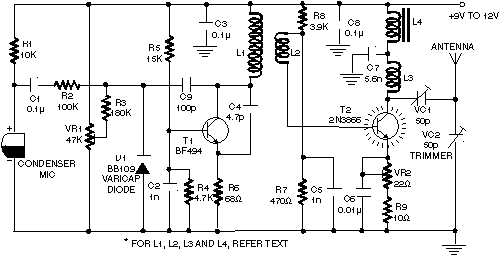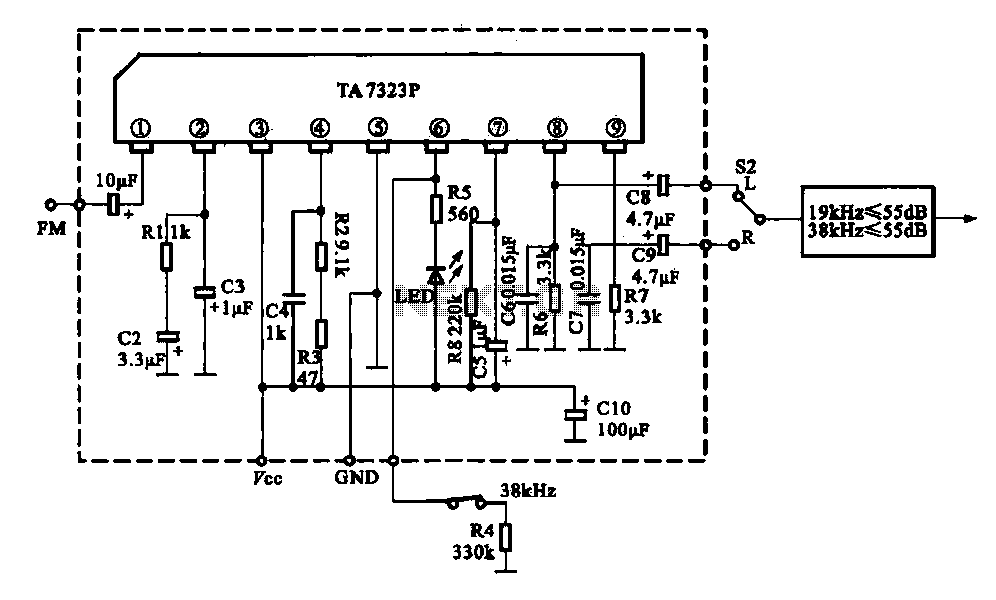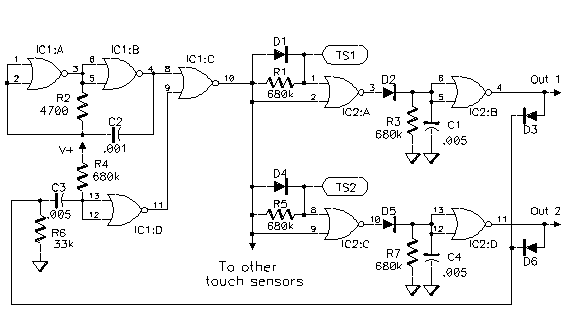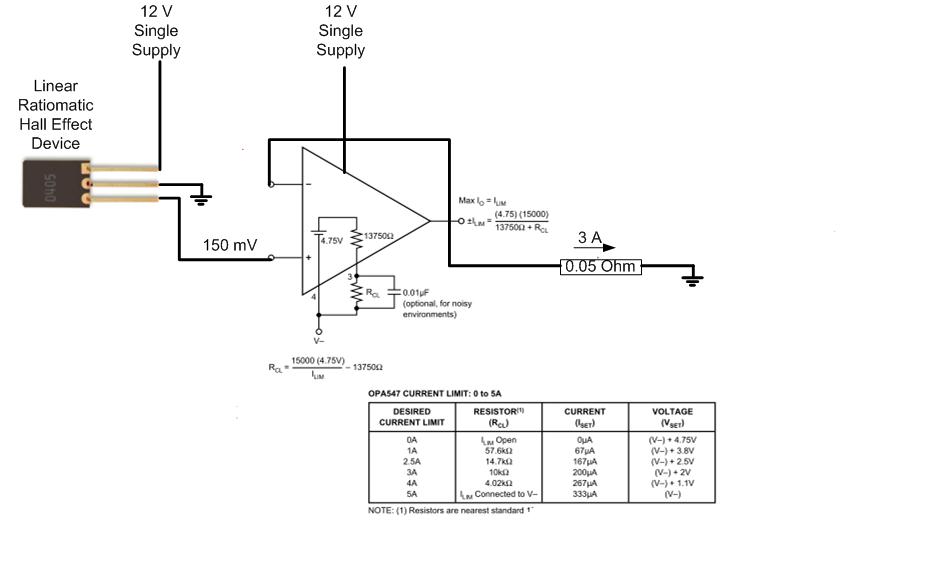
Automatic bathroom light switch circuit CD4022 composed
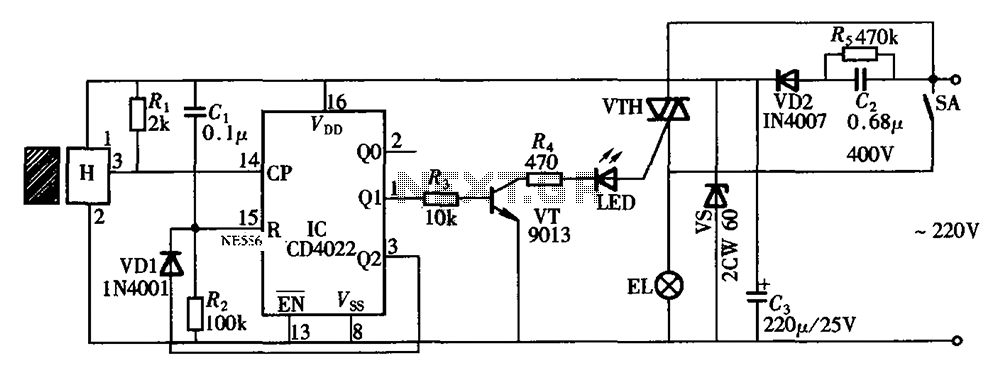
The circuit illustrated in the figure depicts an automatic bathroom light switch system. When the door is opened, the light is activated, illuminating the space. Conversely, when the door is opened again, the light turns off. The circuit comprises a hall switch, an octal counter, a pulse divider (CD4022), a Triac (VTH), and additional components.
The automatic bathroom light switch circuit operates based on the detection of the door's position through a hall effect sensor. This sensor detects magnetic fields and is typically positioned near the door frame, activating the circuit when a magnet, mounted on the door, comes into proximity.
Upon door entry, the hall switch is triggered, sending a signal to the octal counter (CD4022). This counter is designed to count the number of pulses it receives, which corresponds to the door's state (open or closed). The CD4022 is a binary counter that can count up to eight states, providing a reliable method for tracking the door's position.
The pulse divider function of the CD4022 is crucial as it ensures that each opening and closing of the door results in a single pulse being sent to the Triac. The Triac acts as a switch that controls the power to the bathroom light. When the Triac receives a signal from the counter, it allows current to flow to the light fixture, illuminating the bathroom.
For the circuit to function correctly, additional components such as resistors and capacitors may be included to stabilize the operation and prevent false triggering. The design ensures that the light remains on as long as the door is open and turns off automatically when the door is closed again. This automatic control not only enhances convenience but also contributes to energy savings by preventing unnecessary light usage.
Overall, this circuit design effectively combines several electronic components to create a user-friendly and energy-efficient lighting solution for bathroom environments. As shown in FIG bathroom light switch gated automatic way, when someone enters, once the door is opened, the light switch is turned on bright lights. When the out door is opene d once again, switch off the lights off. Circuit as shown in FIG. By the Hall switch circuit, octal counting, pulse divider CD4022 and Triac VTH and other components.
The automatic bathroom light switch circuit operates based on the detection of the door's position through a hall effect sensor. This sensor detects magnetic fields and is typically positioned near the door frame, activating the circuit when a magnet, mounted on the door, comes into proximity.
Upon door entry, the hall switch is triggered, sending a signal to the octal counter (CD4022). This counter is designed to count the number of pulses it receives, which corresponds to the door's state (open or closed). The CD4022 is a binary counter that can count up to eight states, providing a reliable method for tracking the door's position.
The pulse divider function of the CD4022 is crucial as it ensures that each opening and closing of the door results in a single pulse being sent to the Triac. The Triac acts as a switch that controls the power to the bathroom light. When the Triac receives a signal from the counter, it allows current to flow to the light fixture, illuminating the bathroom.
For the circuit to function correctly, additional components such as resistors and capacitors may be included to stabilize the operation and prevent false triggering. The design ensures that the light remains on as long as the door is open and turns off automatically when the door is closed again. This automatic control not only enhances convenience but also contributes to energy savings by preventing unnecessary light usage.
Overall, this circuit design effectively combines several electronic components to create a user-friendly and energy-efficient lighting solution for bathroom environments. As shown in FIG bathroom light switch gated automatic way, when someone enters, once the door is opened, the light switch is turned on bright lights. When the out door is opene d once again, switch off the lights off. Circuit as shown in FIG. By the Hall switch circuit, octal counting, pulse divider CD4022 and Triac VTH and other components.

